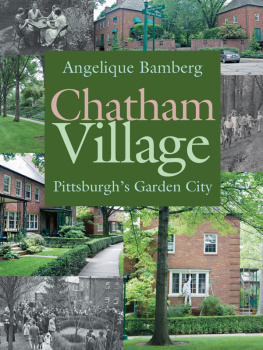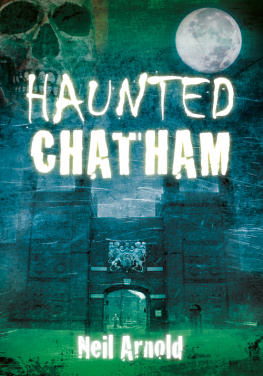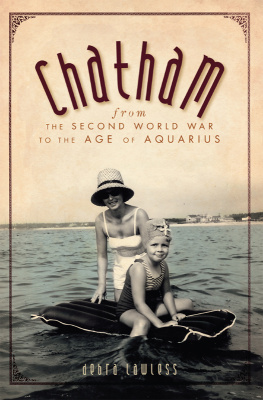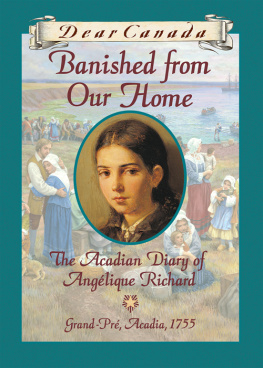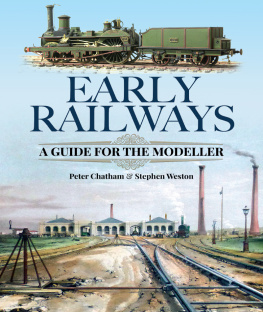Angelique Bamberg - Chatham Village : Pittsburghs Garden City
Here you can read online Angelique Bamberg - Chatham Village : Pittsburghs Garden City full text of the book (entire story) in english for free. Download pdf and epub, get meaning, cover and reviews about this ebook. year: 2014, genre: Politics. Description of the work, (preface) as well as reviews are available. Best literature library LitArk.com created for fans of good reading and offers a wide selection of genres:
Romance novel
Science fiction
Adventure
Detective
Science
History
Home and family
Prose
Art
Politics
Computer
Non-fiction
Religion
Business
Children
Humor
Choose a favorite category and find really read worthwhile books. Enjoy immersion in the world of imagination, feel the emotions of the characters or learn something new for yourself, make an fascinating discovery.
- Book:Chatham Village : Pittsburghs Garden City
- Author:
- Genre:
- Year:2014
- Rating:3 / 5
- Favourites:Add to favourites
- Your mark:
- 60
- 1
- 2
- 3
- 4
- 5
Chatham Village : Pittsburghs Garden City: summary, description and annotation
We offer to read an annotation, description, summary or preface (depends on what the author of the book "Chatham Village : Pittsburghs Garden City" wrote himself). If you haven't found the necessary information about the book — write in the comments, we will try to find it.
Chatham Village : Pittsburghs Garden City — read online for free the complete book (whole text) full work
Below is the text of the book, divided by pages. System saving the place of the last page read, allows you to conveniently read the book "Chatham Village : Pittsburghs Garden City" online for free, without having to search again every time where you left off. Put a bookmark, and you can go to the page where you finished reading at any time.
Font size:
Interval:
Bookmark:

Published by the University of Pittsburgh Press, Pittsburgh, Pa., 15260
Copyright 2011, University of Pittsburgh Press
All rights reserved
Manufactured in the United States of America
Printed on acid-free paper
10 9 8 7 6 5 4 3 2 1
Text design and typesetting by Kachergis Book Design
Library of Congress Cataloging-in-Publication Data
Bamberg, Angelique.
Chatham Village : Pittsburgh's Garden City / Angelique Bamberg.
pages cm
Includes bibliographical references and index.
ISBN 978-0-8229-4406-5 (cloth : alk. paper)
1. Chatham Village (Pittsburgh, Pa.) 2. Planned communitiesPennsylvaniaPittsburgh. 3. Architecture and societyPennsylvaniaPittsburghHistory20th century. 4. Stein, Clarence S. 5. Wright, Henry, d. 1936. 6. Chatham Village (Pittsburgh, Pa.)Buildings, structures, etc. 7. Pittsburgh (Pa.)Buildings, structures, etc. I. Title.
HT169.57.U62C493 2011
307.76'809748'86dc22
2010045466
ISBN-13: 978-0-8229-8070-4 (electronic)
TO THE MEMORY OF K. C. PARSONS
A scholar who walked not ahead of his students,
but among them
Tucked onto a wooded hillside in Pittsburgh, Pennsylvania, a quiet neighborhood of brick row houses and park-like open space testifies to the enduring importance of a housing revolution that wasn't. Chatham Village was built in response to a litany of socioeconomic conditions that sounds eerily familiar: scarcity of jobs and resources, disorienting technological change, distrust of government control, and anxiety about the dangers and discontents of cities twinned with attraction to their unique advantages of density, culture, and community. It grew out of the vision of two of the most brilliant urban planners of their generation, Clarence Stein and Henry Wright, and a social crusader, Charles Lewis, who sat at the helm of Pittsburgh's newly formed Buhl Foundation.
As the Great Depression settled on the United States, Lewis had set out to demonstrate a solution to his city's acute shortage of decent, affordable housing. Like Stein and Wright, he was ahead of his time in his concern about the wasteful environmental effects of sprawling subdivision construction; unlike them, however, he rejected the role of government and philanthropy in assuming responsibility for sheltering the lower classes. Lewis believed that private enterprise was the economic expression of democracy and had the ability to solve any problem, if given incentives and shown the way.
Through Chatham Village, Lewis wanted to model how private builders could build high-quality new housing for people of modest means who usually lived in tenements or in places handed down from the upper classes once they had lost their luster. These working-class residents, Lewis held, constituted a unique market in which private developers could make a profit.
To help him demonstrate this, Lewis hired Clarence Stein and Henry Wright, both architects and housing reform advocates who designed entire communities inspired by the belief that the built environment could transform the way people lived. Stein and Wright did not believe that only the wealthy should be able to afford beauty and quality. At the same time, they were cognizant of the importance of housing that was affordable to build as well as to occupy, and their plans for well-designed communities always strove to reduce construction costs without sacrificing residential amenities.
Stein and Wright were influenced by the utopian ideals of Ebenezer Howard, a Londoner whose book, Garden Cities of To-morrow, promoted the planning and construction of low-density, large-scale zoned communities, organized around a central park, in which people would be able to enjoy the best of both town and country. Beginning in the 1920s, Stein and Wright engaged deeply with Howard's theories, applying and adapting them to their own evolving vision of a modern American town. Howard considered the preservation of nature paramount, streets the most wasteful form of open space, and speculative real estate development deadly to a humane living environment. Accordingly, Stein and Wright's typical housing plan sought to replace the urban grid with organic layouts of streets and houses which responded to the natural features and contours of their sites. The dwellings they specified were small, often connected, clustered around swaths of communal lawns and gardens, and linked by pedestrian pathways. Perimeter roadways delivered vehicles to the edges of a community but did not crosscut its park-like interior.Even as they strove to design a retreat from the modern metropolis, Stein and Wright were preoccupied with accommodating automobiles, as well as electricity, telephones, and other technological innovations that promised to transform life in the early twentieth century. Their community designs were among the first to anticipate the ways in which this would happen.
Lewis wanted Stein and Wright to design the Buhl Foundation's housing project because they believed, as he did, that physical and social planning could be synthesized in one integrated discipline, and that architectural and planning solutions could help to address complex social problems. These men put their hearts, their minds, and their money into the concept that if everyone only had the perfect place to live, the world would truly be a better place.
It is easy to view this as nave. Eighty years after Chatham Village was announced as a demonstration in for-profit planned residential development, it has never been replicated on the scale its creators envisioned, and its influence has largely been diluted to a set of la carte concepts in modern subdivision design. Pittsburgh and other American cities have changed in ways that Lewis, Stein, and Wright could not have imagined, as have larger patterns of urban and suburban housing. Chatham Village has changed from a rental community run for profit by a private foundation to a cooperative owned by a nonprofit corporation of its residents, who constitute a different demographic group than the original tenants of 1932.
Yet the more things have changed at Chatham Village, the more they have stayed the same. Through the thoroughness of its planning, the genius of its site design, and the deliberate investment in high-quality construction, Chatham Village has remained a stable, attractive, desirable community for over the better part of a century. As the fortunes of the conventionally built city around it have fluctuated, Chatham Village has held its value.
Shortly after Chatham Village was completed, its planners Clarence Stein and Henry Wright ended their partnership over professional and personal differences. In 1936, Wright died. Forty years later, the New York Times eulogized Stein, hailing him as a forgotten prophet. The last of just three projects designed by the partnership of Stein and Wright, Chatham Village is the only one to be fully built according to its original plan and to remain intact despite changes in ownership, occupancy, and societal expectations of housing. As such, it is a testament to the particular genius of Stein and Wright's collaboration and the endurance of their community planning ideals. But it is more than a historical artifact. It is a living community in which the original planning and design have, remarkably, required only the finest of tuning to adapt to the twenty-first century.
The ideas and ideals upon which Chatham Village was built are still relevant today: quality, community, affordability, and conservation, to name a few. At a time when suburban sprawl, smart growth, affordable housing, and sustainable development are part of our national vocabulary of concern, Stein and Wright's final and fullest collaboration reveals how the comprehensive planning of communities can shape the way we live, even if it doesn't revolutionize the way we build.
Font size:
Interval:
Bookmark:
Similar books «Chatham Village : Pittsburghs Garden City»
Look at similar books to Chatham Village : Pittsburghs Garden City. We have selected literature similar in name and meaning in the hope of providing readers with more options to find new, interesting, not yet read works.
Discussion, reviews of the book Chatham Village : Pittsburghs Garden City and just readers' own opinions. Leave your comments, write what you think about the work, its meaning or the main characters. Specify what exactly you liked and what you didn't like, and why you think so.

